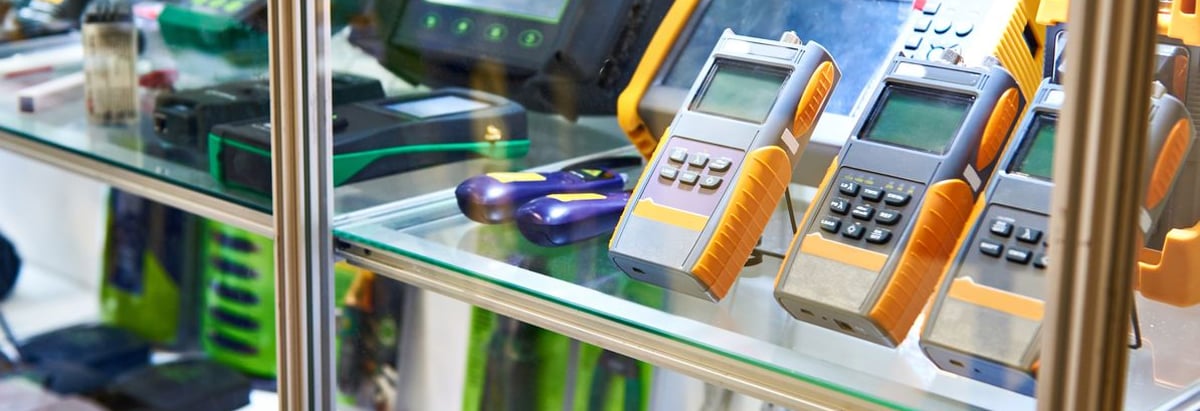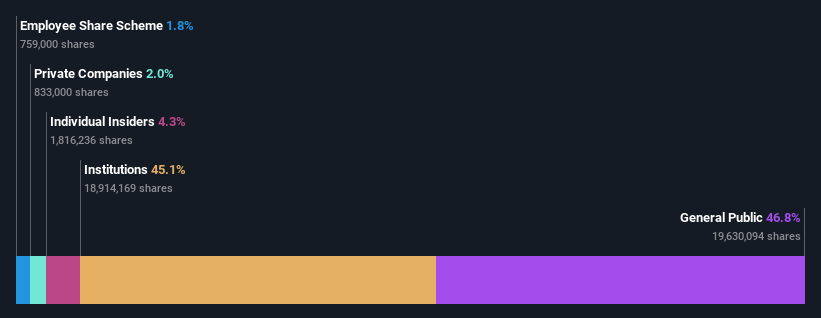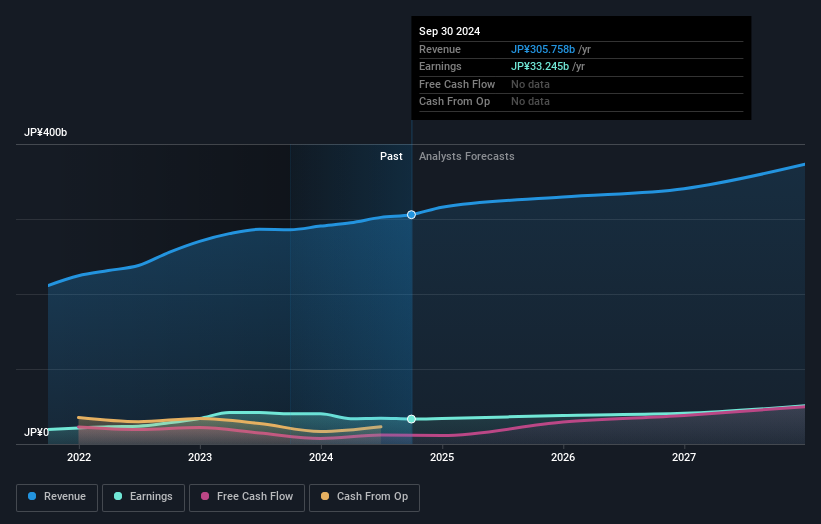- Japan
- /
- Electronic Equipment and Components
- /
- TSE:6856
Retail investors who hold 47% of HORIBA, Ltd. (TSE:6856) gained 3.3%, institutions profited as well

Key Insights
- HORIBA's significant retail investors ownership suggests that the key decisions are influenced by shareholders from the larger public
- 45% of the business is held by the top 25 shareholders
- 45% of HORIBA is held by Institutions
Every investor in HORIBA, Ltd. (TSE:6856) should be aware of the most powerful shareholder groups. The group holding the most number of shares in the company, around 47% to be precise, is retail investors. Put another way, the group faces the maximum upside potential (or downside risk).
While retail investors were the group that benefitted the most from last week’s JP¥13b market cap gain, institutions too had a 45% share in those profits.
Let's delve deeper into each type of owner of HORIBA, beginning with the chart below.
Check out our latest analysis for HORIBA

What Does The Institutional Ownership Tell Us About HORIBA?
Many institutions measure their performance against an index that approximates the local market. So they usually pay more attention to companies that are included in major indices.
As you can see, institutional investors have a fair amount of stake in HORIBA. This implies the analysts working for those institutions have looked at the stock and they like it. But just like anyone else, they could be wrong. If multiple institutions change their view on a stock at the same time, you could see the share price drop fast. It's therefore worth looking at HORIBA's earnings history below. Of course, the future is what really matters.

We note that hedge funds don't have a meaningful investment in HORIBA. Our data shows that National Mutual Insurance Federation of Agricultural Cooperatives, Asset Management Arm is the largest shareholder with 4.0% of shares outstanding. Sumitomo Mitsui Trust Asset Management Co., Ltd. is the second largest shareholder owning 3.9% of common stock, and The Vanguard Group, Inc. holds about 3.4% of the company stock.
A deeper look at our ownership data shows that the top 25 shareholders collectively hold less than half of the register, suggesting a large group of small holders where no single shareholder has a majority.
While studying institutional ownership for a company can add value to your research, it is also a good practice to research analyst recommendations to get a deeper understand of a stock's expected performance. There are a reasonable number of analysts covering the stock, so it might be useful to find out their aggregate view on the future.
Insider Ownership Of HORIBA
The definition of company insiders can be subjective and does vary between jurisdictions. Our data reflects individual insiders, capturing board members at the very least. Company management run the business, but the CEO will answer to the board, even if he or she is a member of it.
Insider ownership is positive when it signals leadership are thinking like the true owners of the company. However, high insider ownership can also give immense power to a small group within the company. This can be negative in some circumstances.
We can see that insiders own shares in HORIBA, Ltd.. The insiders have a meaningful stake worth JP¥18b. Most would see this as a real positive. If you would like to explore the question of insider alignment, you can click here to see if insiders have been buying or selling.
General Public Ownership
With a 47% ownership, the general public, mostly comprising of individual investors, have some degree of sway over HORIBA. This size of ownership, while considerable, may not be enough to change company policy if the decision is not in sync with other large shareholders.
Next Steps:
It's always worth thinking about the different groups who own shares in a company. But to understand HORIBA better, we need to consider many other factors. Take risks for example - HORIBA has 2 warning signs we think you should be aware of.
If you are like me, you may want to think about whether this company will grow or shrink. Luckily, you can check this free report showing analyst forecasts for its future.
NB: Figures in this article are calculated using data from the last twelve months, which refer to the 12-month period ending on the last date of the month the financial statement is dated. This may not be consistent with full year annual report figures.
Valuation is complex, but we're here to simplify it.
Discover if HORIBA might be undervalued or overvalued with our detailed analysis, featuring fair value estimates, potential risks, dividends, insider trades, and its financial condition.
Access Free AnalysisHave feedback on this article? Concerned about the content? Get in touch with us directly. Alternatively, email editorial-team (at) simplywallst.com.
This article by Simply Wall St is general in nature. We provide commentary based on historical data and analyst forecasts only using an unbiased methodology and our articles are not intended to be financial advice. It does not constitute a recommendation to buy or sell any stock, and does not take account of your objectives, or your financial situation. We aim to bring you long-term focused analysis driven by fundamental data. Note that our analysis may not factor in the latest price-sensitive company announcements or qualitative material. Simply Wall St has no position in any stocks mentioned.
About TSE:6856
Flawless balance sheet, undervalued and pays a dividend.
Similar Companies
Market Insights
Community Narratives




